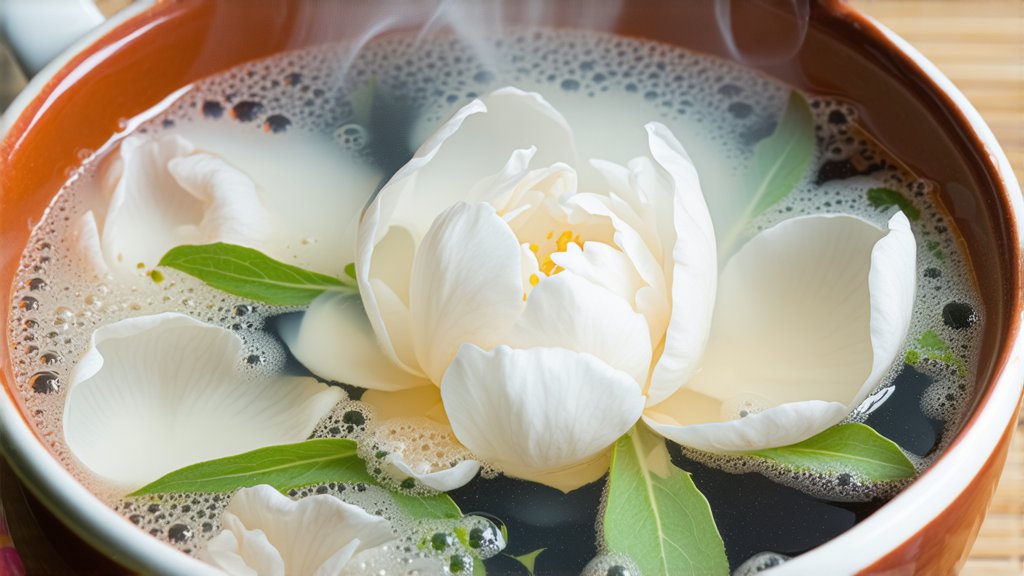
White Peony Tea, also known as Bai Mudan (白牡丹) in Chinese, stands as a testament to the elegance and sophistication inherent in traditional Chinese tea culture. Originating from the Fujian province, this exquisite variety of white tea has captivated tea connoisseurs worldwide with its unique flavor profile and aromatic charm. In this exploration, we delve into the rich history, varieties, meticulous craftsmanship, and art of appreciating White Peony Tea.
A Glimpse into History
The story of White Peony Tea traces back to the early Qing Dynasty, around the mid-1700s, during the reign of Emperor Qianlong. It is said that the tea was first created by accident when a heavy rain prevented the tea leaves from being processed for several days. Upon drying, these leaves revealed a new kind of tea that was lighter in color and flavor compared to the more oxidized green and black teas. This serendipitous discovery led to the development of what we now know as white tea, with Bai Mudan becoming one of its most celebrated representations.
Varieties and Characteristics
White Peony Tea is characterized by its delicate balance of silvery white downy buds (also known as "peony blossoms" or "baihao") and dark green leaves. The name "Bai Mudan" literally translates to "White Peony," reflecting the visual appeal of the tea with its contrasting colors reminiscent of peony flowers. There are two primary grades of Bai Mudan: Superior and First Grade. Superior Bai Mudan consists of mostly buds with very few leaves, offering a more refined taste and higher price point. First Grade, on the other hand, includes a mix of buds and leaves, providing a fuller body and often considered more accessible in terms of cost.
The Craft of Cultivation and Processing
The cultivation and processing of White Peony Tea are as meticulous as they are minimalist, adhering to traditional methods that emphasize simplicity and naturalness. The tea bushes used for Bai Mudan are typically grown in the mountainous regions of Fuding, Zhenghe, and Jian'ou in Fujian province, where the climate and altitude contribute to the tea's distinct characteristics.
-
Harvesting: The picking season for Bai Mudan usually occurs between late March and early April, when the tenderest buds and young leaves are selected. Only the top two or three leaves and the bud are harvested, ensuring optimal freshness and quality.
-
Withering: After harvesting, the leaves undergo a natural withering process, either spread thinly under the sun or indoors in a controlled environment. This step allows the leaves to lose moisture gradually while preserving their natural enzymes, which are crucial for the development of the tea's unique flavors.
-
Drying: Once sufficiently wilted, the leaves are gently dried, often through a combination of sun drying and low-temperature oven baking. This careful drying process helps lock in the tea's aroma and prevents any potential fermentation, maintaining its characteristic white color.
-
Sorting and Packaging: Finally, the dried leaves are sorted according to grade and carefully packaged to preserve their freshness until brewing.
The Art of Appreciation
Appreciating White Peony Tea is not merely about drinking; it is an experience that engages all senses and invites contemplation. Here are some guidelines for savoring this delicate tea:
-
Brewing Temperature: Use water heated to approximately 80-85°C (176-185°F). Boiling water can scald the delicate leaves, resulting in a bitter taste.
-
Tea-to-Water Ratio: A general guideline is to use about 3 grams of Bai Mudan per 150ml of water. Adjust according to personal preference for stronger or milder flavors.
-
Infusion Time: The first infusion should be around 1-2 minutes, with subsequent infusions slightly longer. Bai Mudan can typically be re-steeped multiple times, each revealing different facets of its flavor profile.
-
Observation: As the leaves unfurl in the warm water, take note of their graceful movements and the subtle changes in color. The liquor should be a pale yellowish-green hue, indicative of its light oxidation level.
-
Aroma and Taste: Inhale deeply before taking your first sip to appreciate the tea's floral and fruity notes. On tasting, you'll likely encounter a smooth, mellow sweetness intertwined with hints of honey, apricot, and a whisper of melon. The finish is clean and refreshing, leaving a lasting impression on the palate.
-
Mindfulness: Engaging in the ritual of tea drinking encourages mindfulness and relaxation. Take your time to fully immerse yourself in each moment, allowing the calming properties of Bai Mudan to envelop you.
In conclusion, White Peony Tea embodies the essence of Chinese tea culture—its simplicity, elegance, and profound connection to nature. From its historical roots to its intricate production process and the meditative act of enjoying a cup, every aspect of Bai Mudan invites us to slow down, appreciate the beauty in life's small details. Whether you're a seasoned tea drinker or a curious novice, exploring the world of White Peony Tea promises a journey filled with delightful discoveries and a deeper understanding of this ancient yet timeless beverage.